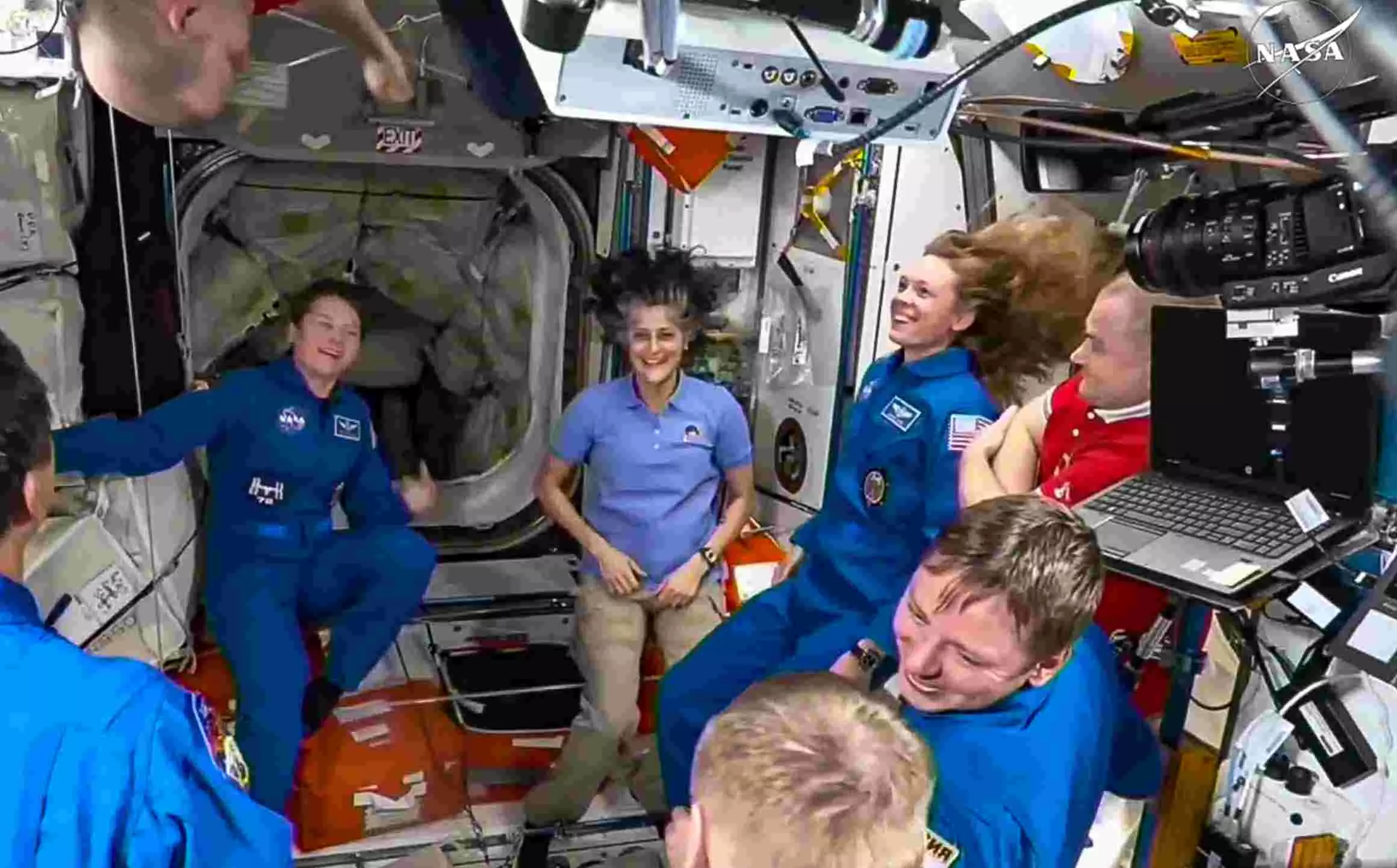
NASA astronauts journey back to earth: Where to watch live coverage of splashdown and more?
Where can you watch NASA astronauts' journey back to earth? What happens as soon as they land, what are the physical and mental changes they undergo?

Sunita Williams and Butch Wilmore will be returning to Earth after their 9-month long unplanned stay aboard the International Space Station (ISS).
They will be accompanied by fellow American NASA astronaut, Nick Hague, and Russian Roscosmos cosmonaut, Aleksandr Gorbunov.
They are returning a day earlier than planned due to NASA’s careful monitoring of weather conditions, deeming it safe for them to return a day early to avoid inclement weather conditions.
Watch: Ex-DRDO chief's take on Sunita Williams' impending return | Dr.William Selvamurthy
Live coverage
The astronauts departed the International Space Station (ISS) early on Tuesday (March 18, 2025), 8.30 am IST morning in a SpaceX capsule for a long-awaited trip back to Earth. The live coverage of the undocking was provided by NASA.
At the conclusion of undocking coverage, NASA will switch to real-time audio-only until live Crew-9 return coverage resumes on NASA+.
The Crew-9's return journey to Earth will take 17 hours as it targets a splashdown off the coast of Florida around 5.57pm EST on Tuesday, March 18 or 3.27 am IST on Wednesday. There will also be live coverage of the deorbit burn, entry and landing on NASA+.
Other places people can observe the live coverage is on NASA’s official YouTube channel and official website.
Also read: Sunita Williams to return to Earth on March 18, NASA shares splashdown time
What happens next?
Once the astronauts safely splashdown off Florida’s coast, they will be taken to NASA’s Johnson Space Centre in Houston, Texas. While at the space centre, they will undergo medical evaluations to see the effects of microgravity on their bodies, assessing their physical condition after prolonged space exposure.
A Return-to-Earth media conference will be held on NASA+ with the deputy associate administrator of NASA’s Space Operations Mission Directorate, Joel Montalbano; manager of NASA’s Commercial Crew Program, Steve Stich; Manager for Systems Engineering and Integration of NASA’s ISS office, Jeff Arend and the Director of SpaceX’s Dragon Mission Management, Sarah Walker, according to media reports.
Watch: Sunita Williams' Home Return - Date & Time Confirmed | NASA | Space X | ISS
The schedule:
- 4.45 pm – Return coverage begins on NASA+
- 5.11 pm – Deorbit burn (time is approximate)
- 5.57 pm – Splashdown (time is approximate)
- 7.30 pm – Return-to-Earth media conference on NASA+ (All EST timings)
Adapting to Earth
The astronauts will have to undergo intense physical therapy to regain their strength, as their bodies in space have likely undergone major physiological and psychological changes. Their bodies will have to re-adapt to Earth’s gravity, which is a process that may take weeks or months.
While in microgravity, astronauts experience muscle atrophy in their legs, back and neck, as their muscles do not bear the weight like when they are on Earth. This may make them experience fatigue, loss of stamina, dizziness, loss of balance - as their inner ear does not balance their body in space like it does on Earth.
This is compounded by orthostatic hypotension that occurs when one stands up, and the fluids that were rushing up to their heads and neck, making their faces temporarily look puffy when in space, are pulled down by Earth's gravity, adding to their dizziness or fainting spells.
Also read: LIVE! Homecoming for Sunita Williams and Butch Wilmore; SpaceX launches mission
Many astronauts have also returned with Spaceflight Associated Neuro-ocular Syndrome (SANS) that causes blurry vision and a difficulty to focus on nearby objects. The astronauts may experience motion sickness when they move their heads for a few days.
Astronauts are put under a strict high calcium and vitamin D diet to combat the effects of losing 1 per cent of bone mass per month in space, making them more susceptible to fractures.
Psychological challenges
A psychological challenge they will have to face is the overwhelming senses of sound and smell they have to re-adjust to once they are back on Earth. This sensory overload may make daily routines difficult, and some pilots have been reported to feel a sense of loss or disorientation.
Being in space is a life-changing experience and these astronauts will have to undergo intense physical and psychological therapy to adjust to ‘normal’ life back on earth after such an unplanned and prolonged duration in space.

